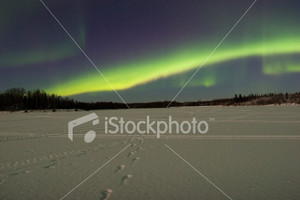Alaska’s Bermuda triangle encompasses an area on a northwestward line from Juneau to Yakutat to Anchorage and north to Barrow and back to Juneau. The triangle covers a huge amount of Alaskan wilderness including the Denali National Park and covers some of the most rugged and remote wilderness in the northern hemisphere. Is there really a mystery here?
The History channel aired a program on the Alaskan Bermuda Triangle and goes into great detail about the largest search and rescue in US history when Congressman Nick Begich and House Majority Leader Hale Boggs go missing within the triangle on a flight from Anchorage to Juneau. The History channel surmises that the US used the then super secret spy plane, SR-71 Blackbird, to photograph the search area in detail but still no trace of the plane or passengers was ever found.
The Tlingit Indians in Alaska have a legend telling of an Otter like man called a Kushtaka. The Kushtaka is said to lure human victims by shape shifting into family members or mimicking the cries of babies. Stories vary in what the Kushtaka does with it victims from ripping them to shreds, to pulling them into the water and even turning victims into fellow Kushtakas, however, the stories are all related to the many disappearances that the Tlingit needed a legend to solve.
Leaving the obvious oxymoron untouched, the Alaskan Bermuda triangle is similar to its Caribbean cousin in that people go missing here, often times with no trace ever found.
According to the Division of Alaska State Troopers, in 2007 a total of 2,833 missing people were added to the state’s missing person’s list.
For a state that ranks 50th in total population, 2,833 is a lot of missing people. However, the main attraction in Alaska is the wilderness and rugged country. It is that ruggedness that beckons people. Alaskans are an outdoor loving people and they play hard in the outdoors. Therein may lay the solution to the mystery.
According to the State of Alaska Governors operating budget for FY2009, The search and rescue budget is set at $376,400. The report states that in 2007 the following 721 search and rescue cases were investigated.
Overdue hikers – 42
Overdue boaters- 85
Overdue motorists- 132
Overdue snow machines- 100
Other search and rescue cases – 302
Aircraft related cases -60
Alaskans and tourists come here to play hard in the rugged wilderness. There are many hazards here including many cold lakes that have the particular habit of sinking bodies rather than floating them as warmer waters do. Alaska has the largest population of bears in the country, is famous for its large mountains and extreme weather conditions and has numerous large glaciers with crevasses as deep and large as modern skyscrapers. Along with these hazards and millions of square miles of wilderness, is it any wonder people disappear here and are never seen again?
Or maybe the Tlingit people have some other insights into the mysteries of the deep wilderness.
